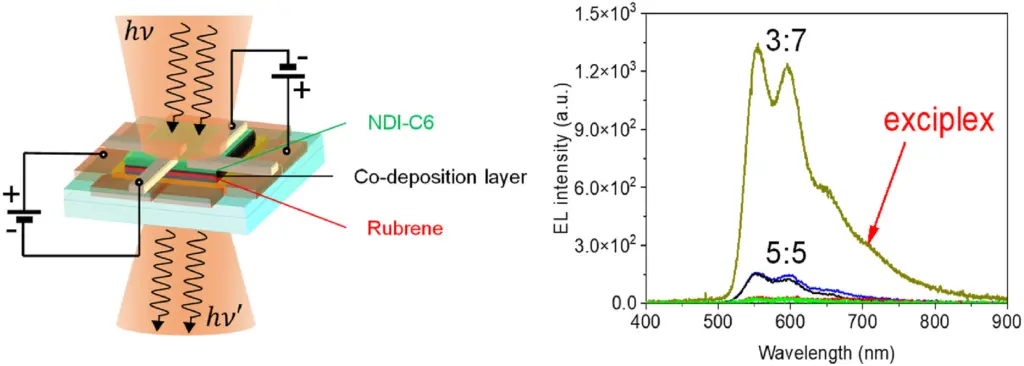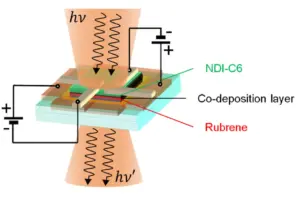Researchers have demonstrated a new class of dual-functional devices that can operate as both organic light-emitting diodes (OLEDs) and organic photovoltaic cells (OPVCs) by carefully engineering the heterojunction interface.

The team utilized co-deposited layers (CDLs) of the organic p-type molecule rubrene and n-type molecule NDI-C6 to create controlled donor-acceptor heterojunctions. By tuning the rubrene:NDI-C6 concentration ratio in the CDL from 3:7 to 5:5 to 7:3, they realized devices with optimized performance for either light emission or light harvesting.
In OLED mode, a maximum external quantum efficiency (EQE) of 0.23% was achieved using a triple-layer (TL) structure of rubrene/CDL (3:7)/NDI-C6. This was enabled by efficient formation of hetero-molecular exciplexes (HMXs) at the heterojunction, broadening electroluminescence to 850 nm. The 3:7 CDL likely optimizes alignment of the highest occupied molecular orbital (HOMO) of rubrene and lowest unoccupied molecular orbital (LUMO) of NDI-C6, promoting radiative HMX recombination.
For photovoltaic operation, power conversion efficiencies (PCEs) up to 0.31% were obtained with a 7:3 CDL. The higher NDI-C6 concentration increases built-in electric field, driving efficient exciton dissociation and charge collection. The optimal 7:3 blend indicates a tradeoff between exciton diffusion/dissociation and charge recombination is required for maximized photocurrent.
These findings showcase the potential of controlled organic heterojunctions to realize multifunctional optoelectronics. Further work on passivating interfacial defects and managing exciton/charge dynamics is needed to improve efficiencies. Nonetheless, this study provides a framework to co-optimize OLED and OPVC performance via donor-acceptor blending, enabling smart lighting/energy technologies.
Reference
Choi, K. H., Lee, S., Kim, T. J., Park, S. H., Kim, J., Choi, D. H., & Joo, J. (2023). Dual functions of light-emission and light-harvesting using organic donor and acceptor co-deposition. Organic Electronics, 121, 106876. https://doi.org/10.1016/j.orgel.2023.106876

